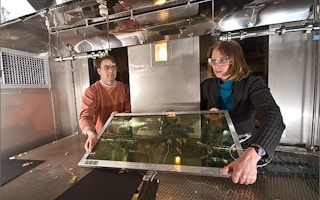Researchers in the US are a step closer to commercialising smart windows that can selectively let in light and heat.
The researchers in 2013 developed a smart glass that could switch between blocking light, heat or both using a small jolt of electricity. Now they have further refined the development with a new “cool mode” and “warm mode”.
The researchers said the cool mode material was a major step towards commercialisation because it enabled the blocking of 90 per cent of near-infrared light and 80 per cent of the visible light from the sun, and took only minutes to switch between modes, whereas in 2013 it required hours.
The development of the “nanostructured architecture for electrochromic materials” could reduce energy costs associated with cooling buildings and homes in summer, the researchers said in Nano Letters.
“This material could be ideal for application as a smart electrochromic window for buildings,” Cockrell School of Engineering chemical engineering professor Delia Milliron said.
The researchers are now working on a low-cost manufacturing method.
In a separate paper published in the Journal of the American Chemical Society, Milliron and her team reported a proof-of-concept demonstrating how they could achieve optical control properties in windows from a well-crafted, single-component film.
The concept includes a simple coating that creates a new “warm mode”, in which visible light can be blocked while near-infrared light can enter. This new setting would be most useful on a sunny winter day, when an occupant would want infrared radiation to pass into a building for warmth, but the glare from sunlight to be reduced, the researchers said.
“These two advancements show that sophisticated dynamic control of sunlight is possible,” Professor Milliron said. “We believe our deliberately crafted nanocrystal-based materials could meet the performance and cost targets needed to progress toward commercialisation of smart windows.”










